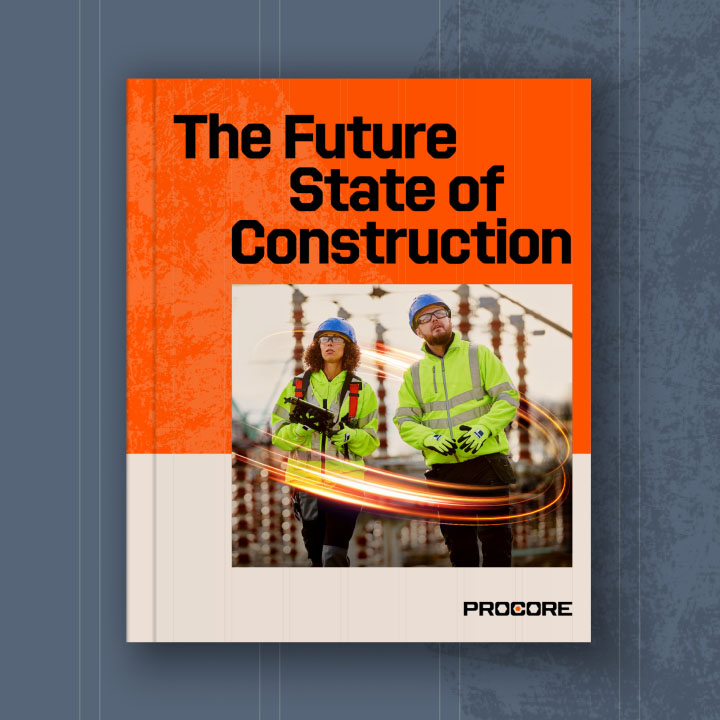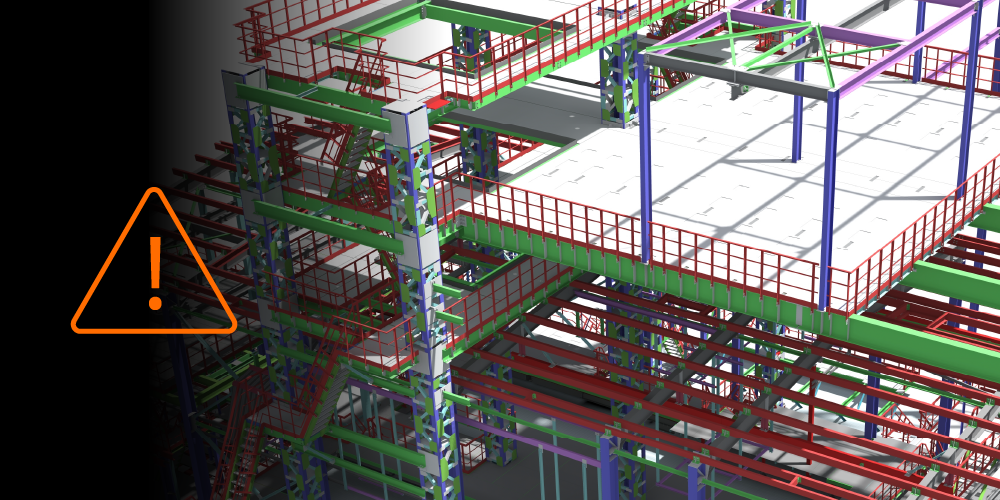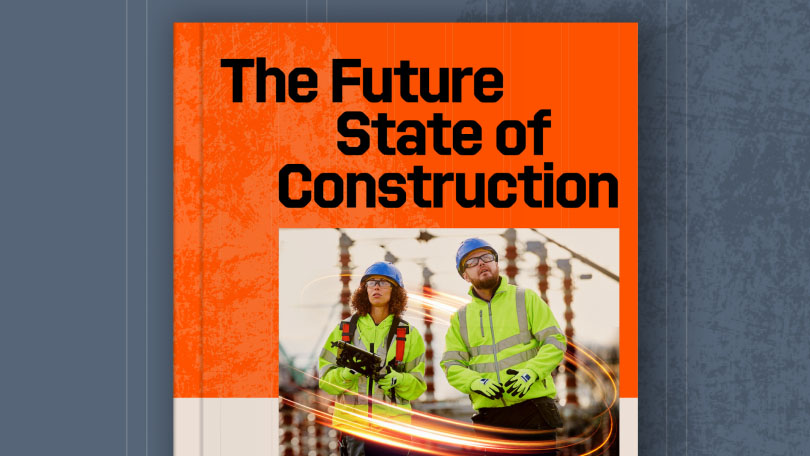Related Articles
— 16 min read
RFIs: A Contractor’s Guide to Requests for Information

Last Updated Aug 28, 2025

Emma De Francesco
Strategic Product Consultant
21 articles
Emma is currently Strategic Product Consultant at Procore where she loves partnering with clients to help them achieve the best possible results. She has worked as a Project Manager in previous roles, responsible for overseeing small to medium-sized projects across various sectors including commercial, health and lifestyle, retail, government and hotels. Throughout these projects, she managed everything from project costs, program and quality & safety, to design management, procurement, and authority approvals.
Last Updated Aug 28, 2025

Head contractors spend a lot of time waiting for owner-developers to respond to their requests for information (RFI). So much so, that if they were to add up all the minutes they spent waiting, they could have probably gone on vacation or even built a few shopping centres. What’s more, waiting around for RFIs can cause costly delays, too.
But what exactly are RFIs? Why are they important? And what can head contractors and owner-developers do to get the most out of their RFIs – without costing each other time and money? Read on to learn all about this – and so much more.
Table of contents
The Basics of an RFI in Construction
An RFI, or Request for Information, is a business process in construction where a contractor requests clarification about documents, drawings, specifications and other project conditions. RFIs help construction teams resolve information gaps, eliminate ambiguities, and capture and share specific decisions during a project.
Most contracts require all parties involved to notify one another when they discover an error, conflict, or omission of details. RFIs are an effective way to perform these tasks, as it enables both contractors and owner-developers to formalise (and document for future reference) the information retrieval and clarification process. In many cases, RFIs are more than just a convenience -- they are an obligation that is fundamental to the successful delivery of a project.
A head contractor or subcontractor will typically submit an RFI as a written document to retrieve information from a design or engineering professional. The information requested through an RFI is typically one of two things:
- Details missing from the original construction contract
- Ambiguous, unclear or conflicting specifications
The Construction RFI Process
The main purpose of the RFI process is simple: to eliminate the time-consuming and costly process of taking corrective action(s) during the life cycle of a project. In Australia, these documents are often referred to as technical queries (TQ). Typically, RFI questions are asked and resolved during the tender management process and/or during the project’s course of construction.
What to Include in an RFI
RFIs can be classified into several categories, and these classifications can be valuable to a construction team if the categories used in the documents are too broad or vague. Categorising an RFI can help steer the team in the right direction, enhance communication, and ensure that the process achieves the intended results.
The following RFI categories are:
- Design clarifications: conflicts, incomplete plans, and specifications.
- Requests for a design change: due to construction errors, sequencing problems, and more.
- Requests for substitutions: value engineering (enhancing the value of a product, process, or material used in construction), material availability, and ease of use.
- Constructability issues: ensuring that the final design satisfies all construction and engineering requirements.
- Latent site conditions: poor weather, health and safety concerns, equipment accessibility, and lack of essential resources (e.g. plumbing, electricity).
While this list is not exhaustive, it does demonstrate the different issues that can occur and the reasons why a contractor may issue an RFI. That said, there are times when it is inappropriate to use an RFI (to clarify or resolve an issue), which is where other methods come in.
When Not to Use RFIs
RFIs should not be used to carry out routine communication or send submittals, safety plans, programs, transmittals, and other documentation. Most importantly, RFIs should never be used in place of verbal communication, commentary and positioning.
When it comes to design, RFIs should not be used to issue design documents that, theoretically, should have been part of the award. (The exception to this is design-build and fast-track designs). Depending on the contract, RFIs may or may not be used for requests for substitutions.
If your contract has a separate process, then follow that process closely and use the correct paperwork. If not, then use the RFI process and identify the RFI as a ‘Request for Substitution.’
Furthermore, do not use RFIs to submit:
- Approvals related to construction means, methods, and contract problems.
- Inappropriate questions related to a product installation method specified by a manufacturer.
- Construction change directives.
- Change order requests.
With regard to contract requirements, make sure the construction team understands the general condition requirements for the project. State and federal government contracts are known for having very fixed processes, which may vary from one owner-developer to another.
RFI vs. Other Requests
In the construction industry, the term RFX stands for "‘"Request for Something," which is a catch-all term that may refer to a proposal, information, quotation or something else. Many construction teams often use RFX as opposed to other acronyms – e.g. RFP, RFI, or RFQ – as its easier to cover all their bases at once.
The three most common types of requests are:
- RFIs (Request for Information)
- RFPs (Request for Proposal)
- RFQs (Request for Qualifications or Quote)
An RFP is the first step in the procurement process. If an organisation wants to issue an RFP, then it must first assess its needs and develop a list of criteria, and then turn these items into questions. The organisation uses those questions to compile a questionnaire, which they send to a group of vendors (suppliers) that can provide the products and services that the organisation (the buyer) needs to complete a project. The vendors then fill out the questionnaire and return it to the buyer, who scores each respondent’s answers. Top-scoring vendors are typically invited to the negotiation phase or to submit tenders (in the form of an RFQ).
An RFQ sometimes refers to a Request for Qualifications. Owner-developers often send RFQs to head contractors, asking for certain financial, safety, and other information. This helps the owner-developer determine if a contractor is qualified to submit a tender. In response, the head contractor will provide a Statement of Qualifications, containing all relevant data (e.g. qualifications, skills, past projects, references) to prove they are a suitable candidate.
The acronym RFQ may also refer to a Request for Quote. Also known as an ITT (Invitation to Tender), a Request for Quote is a process where an owner-developer invites chosen vendors to submit tenders and prices for a chance to be awarded a project. This type of request may be issued after an RFP, but it can also be issued on its own when requesting goods and services that are standardized. For simplicity’s sake, contractors often refer to this as “asking for pricing.”
Biggest Challenges in the RFI Process
One of the main problems with RFIs is the cost burden they place on construction projects. At first, this burden may seem minimal or non-existent, but as the number of delays and downtime increase so do the costs associated with managing RFIs. Aside from including many precise steps to follow, RFIs also require the involvement of many team members (from many departments), which can bring multiple processes to a screeching halt and cause further delays.
According to a 2013 study from Navigant Consulting, which reviewed the impact of RFIs on 1,362 projects around the world, the average cost to review and respond to an RFI was AUD 1,624. Furthermore, the same study found that 21.9 percent of RFIs received no response, resulting in further unnecessary cost burden.
What was the primary cause of these setbacks? The study found that, when poorly managed, RFIs can create significant backlogs, as owner-developers must review and respond to each RFI that each contractor and subcontractor submits.
The study also found that one in ten RFIs were listed as “unjustifiable” (and collectively averaged about AUD 170, 557 per project) due to the following reasons:
- Requests not considered by the design team
- Being overly focused on means and methods, and
- Asking questions already answered in the original contract
By far, though, the no-response rate was a real eye-opener. Without someone replying to and solving the problems expressed in an RFI, this can lead to poor craftsmanship, improper construction, and even potentially unsafe structures.
To avoid the risk of litigation, construction firms must build structures using the full scope and requirements laid out by their engineers and architects; otherwise, the firm may face a lawsuit as the result of a poorly constructed building.
RFI Best Practices
One of the main reasons why RFIs fail is due to poor communication between architects, engineers, contractors, and other stakeholders. In a sense, this is understandable, as each specialty field has its own approach to dealing with different issues, and specific terminology to describe different concepts. Unfortunately, this can lead to siloed thinking, resulting in less overlap and interaction between departments.
Who pays the price for this miscommunication? Why, the builder, of course, who sits at the tail end of the chain. When the builder has a question or needs to clarify a specific detail, they must request information from someone higher up. The result? Time and money are lost on waiting for a response. Multiply that by however many times the builder has to submit an RFI, and you begin to see the root of the problem.
Good owner-developers will set their RFI best practices and expectations prior to starting a project. These RFI best practices may include:
- Developing an RFI procedure
- Defining what does (and does not) constitute an RFI
- Outlining the documentation required along with an RFI for a response
- Defining expected response times
- Communicating the process and requirements to all stakeholders
While these items can help establish clear expectations for a project, you may also want to set a few conditions prior to approaching a business – especially if the business has different RFI protocols or expectations.
1. Make clear requests.
Sometimes, although not intentionally, even the most basic elements may not appear in an RFI. This may confuse the recipient or create unnecessary delays. To avoid any misunderstandings, make the ‘request’ as clear and easy to understand as possible – even if you have to reiterate otherwise basic information. For all you know, the reader may be either oblivious to the matter or too busy to recall on their own.
Make each question singular, clear, and easy to answer. Have each question refer to one specific matter or detail. Don’t combine multiple issues into one question. Avoid using fancy language; after all, you want to be understood, not applauded for your writing skills.
2. Add essential context.
Be sure to add context to each RFI that you submit. Don’t assume the reader knows what issue or detail you are walking about without spelling it out for them. And don’t refer to past or other RFIs, either. Write the question in such a way that anyone on the construction team can understand it.
Don’t rely on the reader’s presumed knowledge (which they may not even have) to fill in the blanks for you – fill in those information blanks for them!
An RFI with proper context should outline:
- The exact nature of the misunderstanding
- A description of the affected parties
- What part of the process is impacted
- Where on the building the information is lacking
- A deadline by which a response is needed
In construction projects, issues don’t present themselves in isolation, and neither should its corresponding RFI. When asking the question, wrap it up with an augmenting detail, an extra detail that helps the reader fully understand the nature of the RFI.
3. Communicate in real time.
Contractors who use RFI management software can effectively eliminate delays by making the RFIs available to all relevant parties instantly. Anyone on the team – from executives to architects to subcontractors – can easily take a photo of the problematic area and upload it to the platform for everyone else to view. Even individuals who don’t use the platform can receive a message alerting them to the issue.
Project managers can then review the RFI in real-time and notify the necessary individuals – all with a few clicks and swipes on their mobile devices. By giving everyone real-time access to RFIs, along with pictures of the request or problematic areas, construction firms can reduce the time and manual labour they spend on issuing RFIs.
When questions arise in the field, knowing how to move forward – especially when a particular change may affect other tradespeople – is essential to a successful project. Using mobile, drawing-centric, and collaborative software for project management can help you not only submit RFIs but also track them in real-time, speed up response times and prioritise RFIs in order of importance.
With the right software, RFIs can be sent to everyone who needs to respond – no matter where they are. Field employees can attach photos, drawings, or schematics that are detailed and specific to the request. The more comprehensive the information is for a recipient, the easier it is for them to understand the RFI and decide or respond quickly.
Once you receive a response, the right software will archive all the activity involved around it; if needed, it can also help you submit a change order and manage the intricate processes that evolve from there. Using technology can help take the menial out of the process and give you more time to plan for potential future issues.
4. Set realistic expectations.
Read the contract thoroughly to understand what qualifies as an RFI and what does not according to the agreement. Many RFIs mistakenly ask questions that are already answered in the original contract documents.
In addition, don’t be surprised if your response merely states that your recipient has an “allotted” amount of time to respond to your request. Many contracts calculate the timeframe for response rates based on the recipient. For example, you may receive a response that says, “The engineer has seven days to respond to your RFI.”
Referring back to the previously mentioned Navigant study, the average response time to an RFI is between 6.4 and 10 days. Of course, the response time depends on the nature of the request, who it is directed towards, and how much information the recipient has to provide.
Some requests take less than an hour to respond to; other requests may take several hours or days to research and respond to. For example, a question about paint colour will take far less time to respond to than a question about engineering.
For this reason, be reasonable when anticipating your response times, and don’t get frustrated if you don’t get a response straight away. If the request is particularly complex, it’ll take longer for the recipient to get back to you.
’One way to set realistic expectations is to separate “mission critical” from “less critical” matters. Be specific in your requests, and level them according to project urgency. If your RFI is “high priority,” then mark it as such, and this may help increase your response times. But don’t expect special treatment every time. If everything is urgent, then nothing is.
What is a legitimate reason to classify an RFI as urgent? If the nature of matter could:
- Delay the project program
- Threaten the quality and safety of the project or your employees, or
- Contribute to a significant change to the project budget
… then you can classify your RFI as urgent. Whether or not the white paint should be bright white or eggshell can wait – at least until the more important questions are answered.
5. Group related requests.
When you submit an RFI to a condition that is critical (that is either happening now or is at the point of being a major problem) then it will likely delay the project.
However, when you review foreseeable issues and send RFIs ahead of time, this gives you plenty of breathing room to wait for a response and, depending on the answer given, act on the advice of that response.
If you realise that certain categories require more clarification, then grouping issues may help speed up your RFI response times – especially for difficult aspects of a project.
6. Include photo documentation.
A picture is worth a thousand words, especially when it comes to RFIs. Attaching photos, drawings, videos, or even hastily sketched diagrams can help eliminate confusion and misunderstandings.
It also makes it easier for a recipient to understand the information being presented to them. Also, when combined with properly written questions, visuals can help illustrate a matter better than what words alone can achieve, speeding up response times.
7. Use RFIs as a tool, not a weapon.
Avoid using RFIs as a weapon against an owner-developer. You may be under the impression that, because you have accumulated a large amount of RFIs, you can prove an owner-developer was lacking in diligence or liable for additional time and costs. But you may not get far in court – and many have tried.
In the court case, Dugan & Meyers Construction Co., Inc. v. Ohio Department of Administrative Services, Dugan & Meyers lost their appeals because the Ohio court rejected their cumulative impact arguments (the impact of a series of changes on productivity, program and cost). Simply put, the large volume of RFIs was not enough to convince the courts that the plans were defective.
While the above court case didn't take place in Australia, the point still stands; trying to weaponise your RFIs can cost you not only time and money but also tarnish your working relationships. This is not to say that RFIs cannot serve as evidence of a faulty project, but if you’re going down that route, then you must be able to demonstrate the true impact of the cumulative RFIs.
8. Suggest a solution.
Proposing a solution not only helps frame and highlight the central issue of the RFI, but it can also help inspire the recipient to produce an immediate response – not put the issue on the back burner.
If you’re in a position to request an RFI, then you likely have the professional expertise and situational awareness to include – with your very specific questions – some possible answers of your own. But why do this? Because it can help the recipient contrast the RFI against a rhetorically proposed solution. Think of it as darkening the background of a photo to help exaggerate the outlines of the subject. Of course, you’re not expected to have the answers, but presenting some can still move the process along.
Again, this is where technology can be your friend. By using mobile-enabled, collaborative software, it can help streamline your communications and keep everyone involved in real time — and document every RFI-related activity, covering your tracks.
Improving Outcomes with a Better RFI Process
Remember that RFIs are not submittals, change orders or contracts. While they are important, and you do need them to get answers fast, it is wise to use them properly. Protect your sanity by planning ahead and having realistic expectations when it comes to response times. Also, be sure to follow best practices, and make use of innovative software to make both your life and the lives of those around you easier. These will all equate to less time waiting and more time working.
If the owner-developer or head contractor is using software to track and respond to RFIs, ask for training so that you can use the system properly. If you are the one introducing the system, make sure that the owner-developer, company, or head contractor understands the need for real-time collaboration, so as to keep the project on time and within budget.
Some construction contracts even specify the type of project management system to use. If this is the case for you, then be sure to read your contracts carefully.
See what’s coming in construction over the next decade.
Download the Future State of Construction Report for insights, trends, and innovations shaping the industry over the next 8–10 years.

Categories:
Written by

Emma De Francesco
Strategic Product Consultant | Procore
21 articles
Emma is currently Strategic Product Consultant at Procore where she loves partnering with clients to help them achieve the best possible results. She has worked as a Project Manager in previous roles, responsible for overseeing small to medium-sized projects across various sectors including commercial, health and lifestyle, retail, government and hotels. Throughout these projects, she managed everything from project costs, program and quality & safety, to design management, procurement, and authority approvals.
View profileExplore more helpful resources

Managing Direct Costs in Construction: How Visibility Drives Profitability
Direct costs define the financial reality of every construction project. They cover the labour, materials, and equipment that drive delivery and determine profitability. But even the best-planned budgets can shift...

BIM Clash Detection: Reducing Rework, Delays, and Risk in Construction
Design clashes can be a significant hidden cost in construction, as each conflict between systems risks expensive rework, project delays, and reduced margins. BIM clash detection empowers teams to identify...

Next-Gen Job-Costing: Ready to Move? 5 Things to Consider Before You Get Started
In this three-part series, Quantity Surveyor turned Financial Solutions Specialist Clint Burgess uncovers the real-world gains for people, processes, and profits when businesses move from legacy to next-generation Enterprise Resource...

From Workarounds to Workflow: Solving Construction’s Legacy Job-Costing System Challenges with Next-Gen Tools
In this three-part series, Quantity Surveyor turned Financial Solutions Specialist Clint Burgess uncovers the real-world gains for people, processes, and profits when businesses move from legacy to next-generation Enterprise Resource...
